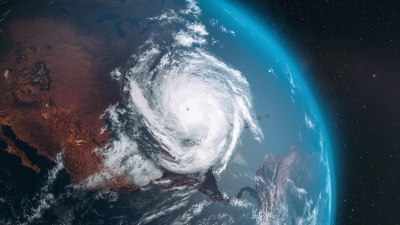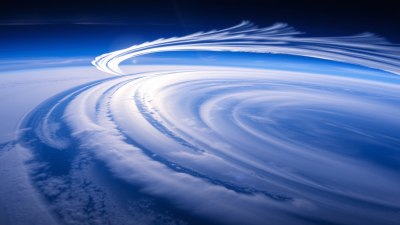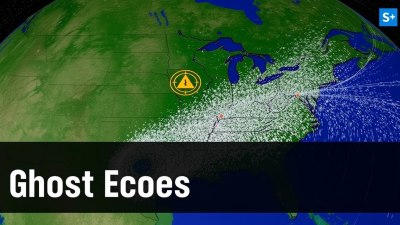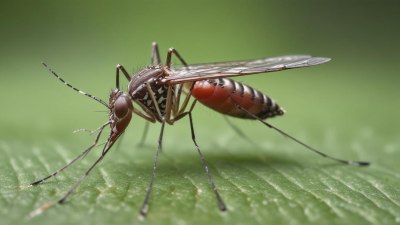Why Central America is a Hurricane Magnet and a Tropical Paradise at the Same Time
Explore the unique geography of Central America that makes it both a hurricane magnet and a tropical paradise.

Central America is a region often described as a tropical paradise due to its stunning landscapes, rich biodiversity, and vibrant culture. However, it also bears the brunt of powerful hurricanes during the storm season, making it a hurricane magnet. This paradoxical identity raises questions about the geographic, meteorological, and environmental factors at play. In this article, we delve into the unique reasons that make Central America both a haven for tropical beauty and a target for destructive storms.
The Geography of Central America
Spanning roughly 1,600 kilometers, Central America is a narrow isthmus that connects North and South America. The region comprises seven countries: Belize, Guatemala, El Salvador, Honduras, Nicaragua, Costa Rica, and Panama. Central America is endowed with diverse geographies, including mountains, rainforests, and coastlines along both the Caribbean Sea and the Pacific Ocean. This unique positioning exposes the area to tropical weather patterns and varying climatic conditions.
Warm Waters: A Recipe for Hurricanes
The Caribbean Sea's warm waters play a significant role in forming hurricanes. The sea surface temperature must reach at least 26.5 degrees Celsius (about 80 degrees Fahrenheit) for tropical storms to develop. This is often the case in Central America, especially during the peak hurricane season from June to November. Warm ocean water fuels hurricanes, providing the necessary heat and moisture to allow these storms to intensify.
Location and Vulnerability
Central America's geographical position places it directly in the path of hurricanes that form in the Atlantic and Pacific Oceans. The region is bordered by two major bodies of water, which not only provide a source for tropical storms but also create a funnel effect, drawing storms toward land. The Pacific Ocean, in particular, can produce hurricanes that quickly move eastward toward Central America. The narrow isthmus also means that storms can impact multiple countries in a short time span.
Climate Patterns and El Niño
Central America experiences various climate patterns, including El Niño and La Niña phenomena, which can influence hurricane activity. El Niño generally leads to warmer ocean temperatures, increasing storm development in the Atlantic. Conversely, La Niña may result in cooler waters, affecting the frequency and intensity of storms. These climate patterns can create years of heightened hurricane activity followed by periods of relative calm, making forecasts challenging.
The Role of Topography
The diverse topography of Central America contributes to how hurricanes form and impact the region. Mountainous areas can disrupt storm patterns and lead to sudden changes in wind speed and direction. They can also lead to severe flooding and landslides when storms make landfall. Coastal cities may face the brunt of storm surges, while areas inland may experience different types of challenges such as heavy rainfall. This variety in geography leads to varied impacts from each storm.
Biodiversity and Ecological Significance
In addition to its hurricane-prone nature, Central America is home to one of the richest tropical ecosystems in the world. The region's rainforests, coral reefs, and diverse wildlife contribute to its designation as a tropical paradise. These ecosystems rely on a delicate balance of climate and weather patterns. However, hurricanes can be devastating to these environments, leading to habitat destruction and loss of species. Understanding the interplay between hurricanes and biodiversity is essential for conservation efforts in the region.
Cultural Resilience and Adaptation
The people of Central America have developed a unique cultural resilience in the face of natural disasters. Communities are often equipped with educational programs and disaster preparedness strategies, helping residents to respond effectively to hurricanes and other emergencies. Preservation of local traditions, music, and cuisine continues, even as communities face the challenges posed by seasonal storms. This blend of cultural strength and environmental challenges highlights the complex identity of Central America.
Tourism and Economic Implications
Tourism is a vital component of Central America's economy, driven by its tropical climate, stunning landscapes, and diverse activities such as hiking, water sports, and cultural exploration. However, frequent hurricanes can deter tourists, leading to fluctuations in the economy. Destinations often promote off-peak travel for tourists seeking to enjoy the exotic flora, fauna, and warmth this paradise offers, despite the threat of storms. Balancing tourism growth and disaster preparedness remains a pivotal challenge for local governments.
Recent Hurricane Trends
In recent years, Central America has seen an increase in hurricane frequencies and intensities, raising concerns among meteorologists and scientists. Climate change is believed to be a significant contributing factor, as rising ocean temperatures and altered weather patterns create conditions conducive to stronger storms. The impact of these hurricanes is becoming increasingly severe, causing widespread destruction and posing a long-term threat to the ecosystems and economies of Central American nations.
Community and Government Responses
In the face of increasing hurricane threats, Central American governments and local organizations have prioritized disaster preparedness and response initiatives. This includes early warning systems, evacuation plans, and public education campaigns. Community involvement plays a critical role in effective response, as local knowledge and resources can significantly enhance resilience against storms. Increased collaboration with international aid organizations also supports recovery efforts post-hurricane.
Conservation Efforts in a Storm-Prone Landscape
As hurricanes pose a threat to biodiversity, conservation efforts have become essential in Central America. Initiatives focus on protecting natural habitats and restoring areas damaged by storms. Organizations work collaboratively with local communities to implement sustainable practices that balance economic needs with ecological conservation. This effort fosters a deeper appreciation for the region's ecological significance and promotes long-term resilience against future disasters.
Unlocking the Future of Central America
The dual identity of Central America as a hurricane magnet and a tropical paradise poses unique challenges and opportunities. Addressing the impacts of climate change while protecting biodiversity will require innovative thinking and collaboration between government entities, NGOs, and local communities. While hurricanes are a reality of life in this region, the beauty and cultural richness of Central America continue to attract those who seek adventure and exploration, urging for a brighter future through adaptation and resilience.











